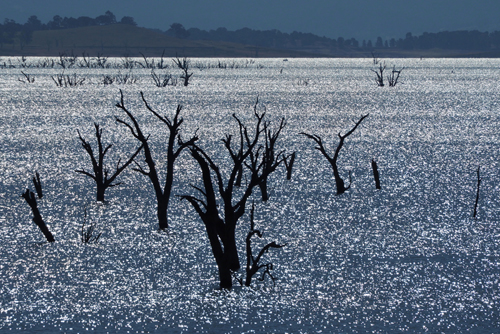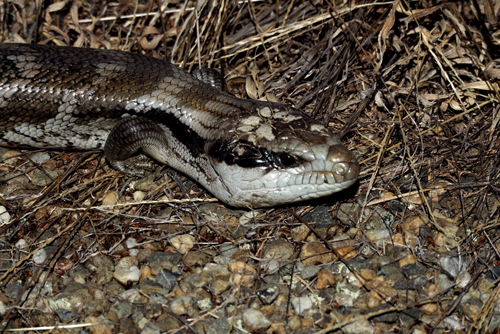April 22, 2021. Melbourne to Milawa.
This short break was very much a family affair and built around another return trip to Yackandandah or Yack, as it is affectionately known.
Yack holds a very special place in the hearts of Thea’s family.
Her father, although born in Melbourne, spent much of his early childhood in Yack after his mother died when he was only 8 months old. He was then raised by his grandparents in this quaint country town.
Yackandandah was a former gold mining centre and has its origins in the 1850s. Immigrants from around the world flocked to this area when gold was discovered.
We had visited Yack at this time of year in the past and were taken by the spectacular display of Autumn colours.
We were certainly not disappointed this time as well.
Our first night’s stop on the way to Yack, was at Milawa, an area is known for its wineries and food.
We had booked into the Gamze Smokehouse and Restaurant for dinner, which was just 200 metres from our motel.
As the restaurant name suggests, there were lots of local cured meat on offer. We therefore started with the Charcuterie board.
We should have stopped there, as it was huge.
They even had Bridge Road Brewery Pale Ale, from Beechworth, on tap as well as many local wines.
April 23, 2021. Milawa to Yackandandah.
It was only a short 50km drive to Yack, so we decided to visit some of the famous gourmet food manufacturers that are in the region.
After breakfast at the motel we went looking for a coffee and popped into Brown Brothers.
This celebrated winery, dating back to 1896, was at the forefront in the creation of the Milawa Gourmet Region.
Established in 1994, this food and wine area was the first to be developed in Australia.
As well as wine there are many other culinary delights manufactured in the region, such as mustards, cheeses, breads, olives and, as we discovered, smoked meats.
We did manage to do a bit of shopping before continuing our journey.
Another side trip on the road to Yack, was a stop in Myrtleford. There we walked through the Rotary Park, where we discovered the historic Log Tobacco Kiln that was built in 1957.
From the 1930s to the 1960s tobacco growing and curing was a major industry in this region. Much of the land was owned and worked by Italian immigrants.
It was then time for a walk and along the Ovens River.
We were accompanied by a group of young adults with disabilities. They were having a great outing and delighted in discovering a series of mosaics that had been created along the river walk.
In the heart of Myrtleford, we discovered Coffee Chakra. It was officially closed but they still managed to serve us.
It was both a coffee roaster and cafe so the brew was excellent.
Myrtleford seems to have become a haven for Australians of Indian heritage, as we saw many around the town. They were not just visiting but active in local business as well. In fact the barista, owner and coffee roaster at Coffee Chakra was of Indian origin but with a broad Aussie accent.
On the way out of town we visited The Big Tree. This giant Red River Gum is one of the largest of its kind in Victoria and over 200 years old.
That night there was a large group of 12 for dinner, which was at the Star Hotel.
The Star is also known as the Top Pub, being at the top of Yackandandah’s High Street. It was also very close to the motel where most of us were staying.
April 24, 2021. Yackandandah.
We all had a quiet day in Yack, punctuated by a group walk to Yackandandah Creek.
The main purpose was to visit the spot where the ashes of Thea’s father, mother and brother have been scattered.
That night it was dinner at the Yackandandah Hotel, or the Bottom Pub, which, understandably, is at the bottom of the High Street hill.
April 25, 2021. Yackandandah.
It was Anzac Day and Yackandandah, like many country towns, had a parade.
High Street was blocked off and the local returned service men and women, as well as others wearing their relative’s medals marched up the hill. After them came the children of the town’s sporting groups, clubs and school.
All this was accompanied by a marching band.
It was a very short parade that lasted less than 10 minutes. There was then a wreath laying ceremony in the Memorial Park.
In the afternoon we drove to the Huon Reserve car park and did a return walk, along the Lake Hume and High Country Rail Trail to the Sandy Creek Rail Bridge.
Lake Hume, formerly Hume Reservoir, was constructed between 1919 and 1936 by damming the Murray River downstream of its junction with the Mitta River.
The dam has many purposes, such as flood mitigation, hydro-power, irrigation, water supply and conservation.
There are hundreds of dead trees partly submerged in the lake, giving it the eerie feeling of a tree graveyard.
That night dinner was back at the Top Pub and being a Sunday night it was much quieter than it had been on Friday.
Friday seems to be the night that country people hit the town.

The grave of George Henry Backhaus (50 years) and John Henry Backhaus (42 years) Who died September 23, 1915
April 26, 2021. Yackandandah to Corryong.
This was our last morning in Yack, before the shortish drive to Corryong, where we would stay for two nights.
It was a day of ghost hunting for Thea as we meandered towards Corryong.
We stopped at Yabba Cemetery where George and John Backhaus are buried. Tragically these two brothers, great uncles of Thea, died in a house fire on September 23, 1915.
It was the strangest cemetery I have ever visited. Out in the middle of nowhere, we had to go through a farm gate then walk across paddock to get the cemetery entrance.
Once we reached Corryong I had some work to do and the best place was in the bar of the Corryong Hotel, which is where we were staying.
Well it did have good internet and a bench to put my computer on.
In town the Corryong Hotel/Motel is also known as the Bottom Pub. What is it with this top and bottom thing?
The food was ok and they did have Blowhard Pale Ale from Bright Brewery on tap.
As the kitchen closed at 8:30 so it was an early night, made even more interesting by the size of the room we were in.
You could barely swing a possum in there.
We found the best place to get out of each others way was to sit on the bed and watch TV.
April 27, 2021. Corryong.
Breakfast at the motel wasn’t great but it was included in the cost of the room.
We then had a coffee at the Cafe Corryong Brew, which is next door to White Owl Coffee Roasters.
The coffee was great, that’s after giving the barista a few instructions as to the size and strength of what we wanted.
Today we were searching for the source of the mighty Murray River and not looking for ghosts.
That was until we discovered that the spring, which is the source, is in an inaccessible wilderness area
The weather was beautiful with a high of 23°C+ – time to drag out the shorts from the bottom of the bag.
We did stop at Bringenbrong, which crosses over the Murray River on the border between NSW and Victoria.
From there we drove into NSW and on to Khancoban Dam, where we walked across the dam wall. Halfway across we found a rather large blue-tongue lizard, sunning itself on the side of the road.
The views from the spillway of the Khancoban Pondage and the Swampy Plain River valley were spectacular.
Being in the heart of the Snowy Mountain Scheme we then drove the short distance to the Murray 1 Power Station.
This is just one of seven power stations, sixteen major dams, 145km of interconnected tunnels and 80 km of aqueducts in the Snowy Scheme.
Completed in 1974, it took 25 years to build and today is regarded as one of the seven engineering wonders of the modern world.
It was then back to Corryong where we did a bit of local sightseeing.
The Man from Snowy River, a poem by Banjo Peterson, (1864-1941) is immortalised in a statue by the artist Brett Garling. The statue sits proudly next to the Corryong tourist information office.
The poem was first published in the Bulletin magazine on April 26, 1890 and is one of Australia’s most famous pieces.
It is believed that the The Man, is the legendary local stockman, Jack Riley, who migrated form Ireland to Australia, as a 13-year-old, in 1850.
Another local hero, this one of the canine variety, is Horrie the Wog Dog. His statue is in the memorial gardens, which is next to our favourite coffee shop, Cafe Corryong Brew.
It’s no coincidence that Horrie’s statue sits near the war memorial celebrating those locals who lost their lives in times of conflict.
Horrie, an Egyptian Terrier, was the unofficial mascot of the 2/1st Machine Gun Battalion of the Second Australian Imperial Force. He was befriended by an Australian soldier, Private Jim Moody, while they were fighting in Egypt during the Second World War.
He served as an air sentry and was promoted to rank of corporal.
Horrie moved around with the Battalion and was finally smuggled back to Australia when Jim Moody was repatriated in 1942.
Due to Australia’s strict quarantine laws it’s believed that Horrie was put down in 1945. However there is an alternative story, that has become local legend, that Moody substituted another dog for Horrie and he lived on in Corryong.
Dinner was at the Corryong Hotel again as there wasn’t much else open.
That night it was a Super Moon or Pink Moon as it’s described in the northern hemisphere. This has nothing to do with the moon’s hue but the colour of the spring flowers that are found during this Spring moon event.
April 28, 2021. Corryong to Melbourne.
After another good coffee at the Cafe Corryong Brew, we set off on what was to be a long day’s drive home.
The first part was an exploration of the newly named Great River Road. This took us from Corryong through Towong, Walway and Jingellic to Lake Hume.
The scenery was spectacular as we drove west, with the Murray River coming and going on the right hand side.
We even came across the birthplace of the Murray Grey at Thologolong, as well as a small herd grazing on the roadside.
This iconic breed of cattle was discovered by accident in 1905 by the Sutherland family. It can now be found throughout Australia, New Zealand, Asia, North America and Europe.
After the meandering drive along the Murray to Lake Hume it was then onto the Hume Highway and back to Melbourne














